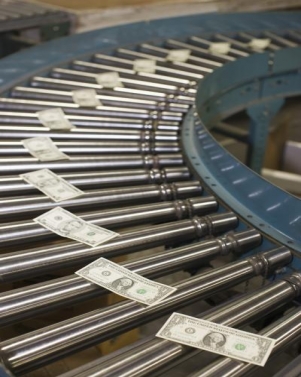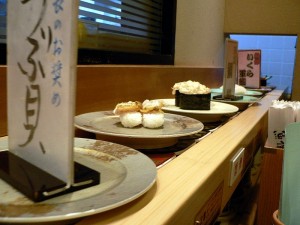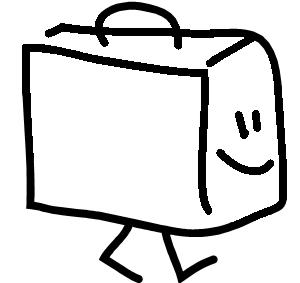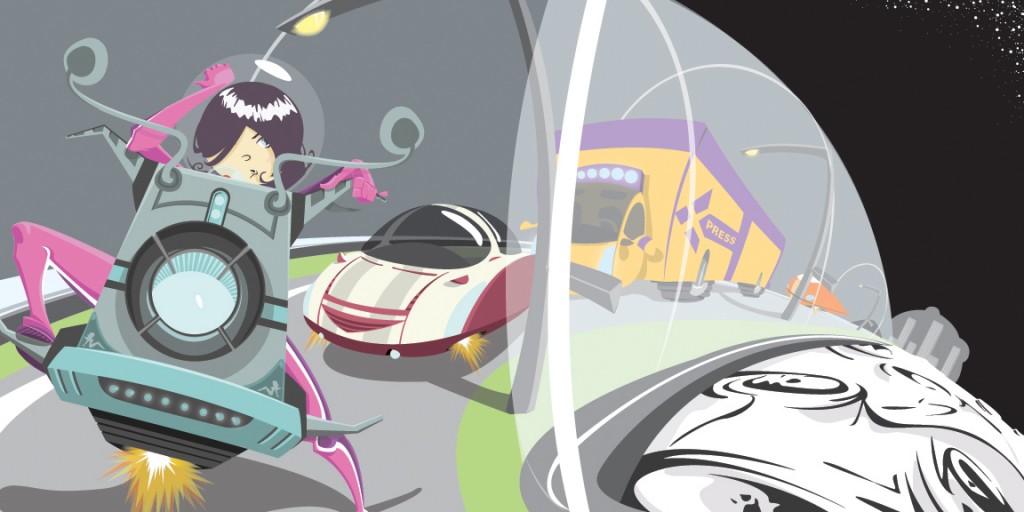Activity: Conveyor Engineering
Lesson courtesy of TryEngineering.org
Summary
In this activity, teams of students in grades 3 to 12 explore how engineers work to solve such societal problems as moving goods, materials, and people by developing a conveyor system out of everyday materials than can transport pieces of candy 4 feet, including a 90-degree turn. Teams evaluate their results and reflect on them as a class.
Grade level: 3 – 12
Time: Two or three 45-minute sessions
Learning objectives 
- Learn about engineering design and redesign
- Learn about manufacturing processes and conveyor systems
- Learn how engineering can help solve society’s challenges
- Learn about teamwork and problem solving
Learning Outcomes
As a result of this activity, students should develop an understanding of:
- engineering design
- manufacturing and distribution
- conveyor systems
- teamwork
Standards
National Science Education Standards
CONTENT STANDARD A: Science as Inquiry
As a result of activities, all students should develop
- Abilities necessary to do scientific inquiry
- Understanding about scientific inquiry
CONTENT STANDARD B: Physical Science
As a result of the activities, all students should develop an understanding of
- Properties of objects and materials
- Position and motion of objects
- Properties and changes of properties in matter [grades 5-8]
- Motions and forces [grades 5 -8]
- Conservation of energy and increase in disorder [grades 9-12]

- Interactions of energy and matter [grades 9-12]
CONTENT STANDARD E: Science and Technology
As a result of activities, all students should develop
- Abilities of technological design
- Understanding about science and technology
CONTENT STANDARD F: Science in Personal and Social Perspectives
As a result of activities, all students should develop understanding of
- Types of resources
- Science and technology in local challenges
- Risks and benefits [grades 5 -8]
- Science and technology in society [grades 5 -8]
- Personal and community health [grades 9-12]
- Science and technology in local, national, and global challenges [grades 9-12]
CONTENT STANDARD G: History and Nature of Science
As a result of activities, all students should develop understanding of
- Science as a human endeavor
- History of science [grades 5 -8]
- Historical perspectives [grades 9-12]
National Technological Literacy Standards
The Nature of Technology
- Standard 1: Students will develop an understanding of the characteristics and
scope of technology.
Technology and Society
- Standard 4: Students will develop an understanding of the cultural, social,
economic, and political effects of technology. - Standard 6: Students will develop an understanding of the role of society in the
development and use of technology. - Standard 7: Students will develop an understanding of the influence of technology on history.
Design
- Standard 8: Students will develop an understanding of the attributes of design.
- Standard 9: Students will develop an understanding of engineering design.
- Standard 10: Students will develop an understanding of the role of troubleshooting, research and development, invention and innovation, and experimentation in problem solving.
- Abilities for a Technological World
- Standard 11: Students will develop abilities to apply the design process.
- Standard 13: Students will develop abilities to assess the impact of products and systems.
The Designed World
- Standard 18: Students will develop an understanding of and be able to select and use transportation technologies
Materials 
For each team:
- Candy or similar sized items, such as washers or pennies
- Tubes (can be paper towel rolls, toilet paper rolls, or PVC)
- Piping or other similar materials – or even rows of soda bottles or pencils
- Rubber bands
- Ball bearings
- Balls
- Fabric sheets
- String
- Gears
- Handles
- Paper cups

- Straws
- Paper towels
- Paper clips
- Tape
- Soda bottle
- Glue
- String
- Foil
- Plastic wrap
- Pens/Pencils
- Paper
- Hose or tubes
- Crayons and other items available in the classroom
Procedure 
- 1. Show students the student reference sheets. (Page 4 – 7 of the pdf.) These may be read in class or
provided as reading material for the prior night’s homework. - 2. To introduce the lesson, consider asking the students if they have been to anairport and wondered how their luggage was sorted or delivered. Ask them to think about any “moving sidewalks” they have traveled on (airports, malls, other large buildings).
- 3. Working in teams of 3 to 4, students should research how conveyor belt systems operate and then brainstorm ideas for designing one.
- 4. Teams then consider available materials and develop a detailed drawing showing
their conveyor system including a list of materials they will need to build it. - 5. Have students build and test their conveyor system, also observing the systems developed and tested by other student teams.
- 6. Teams reflect on the challenge, and present their experiences to the class.
Extensions
- Have advanced or older students power their conveyor systems with motors or gear systems.
- Have students write an essay or a paragraph about three existing and one imagined application of a conveyor belt system.
Resources
Ford Motor Company History – The Assembly Line
Hydrol’s ABC Conveyor Book. Schematics of the different parts and configurations
Simple animation of conveyor belt. [YouTube
Animation of conveyor belt with engine. [YouTube 0:39 secs]
The Invention of the Moving Assembly Line: A Revolution in Manufacturing (ISBN:
978-1604137729)
Watch I Love Lucy‘s hilarious skit about working on a candy assembly line:
[youtube]http://www.youtube.com/watch?v=HnbNcQlzV-4[/youtube]
Filed under: Class Activities, Grades 6-8, Grades 9-12, Grades K-5
Tags: baggage, conveyor, conveyor belt, Engineering, luggage, Manufacturing Engineering, suitcase, Systems Engineering, traffic, Transportation









